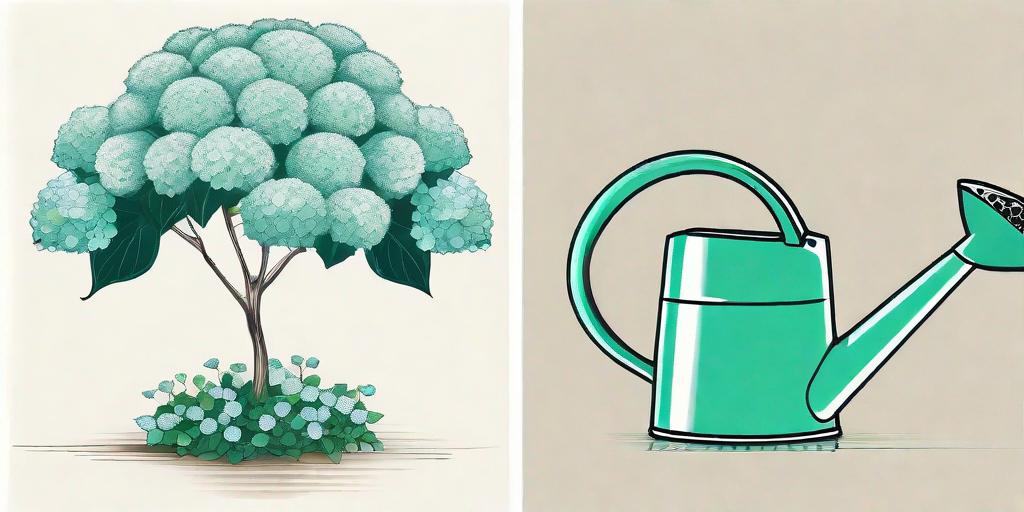
Hydrangeas are the divas of the garden world. They're flamboyant, showy, and demand attention. But, like all divas, they can be a bit tricky to handle. Fear not, dear reader, for we're about to embark on a journey that will transform your hydrangeas from wilting wallflowers into blooming beauties.
Understanding Your Hydrangea
Before we dive into the nitty-gritty of hydrangea care, it's important to understand what makes these divas tick. Hydrangeas are deciduous shrubs that are native to Asia and the Americas. They're known for their large, vibrant flowers that come in a variety of shapes and colors.
There are several types of hydrangeas, including the bigleaf hydrangea, the panicle hydrangea, and the oakleaf hydrangea. Each type has its own unique characteristics and care requirements. So, before you start pruning and watering, make sure you know what type of hydrangea you're dealing with.
Bigleaf Hydrangea
The bigleaf hydrangea is the most common type of hydrangea. It's known for its large, round flower clusters and its ability to change color based on the soil's pH level. If you want a hydrangea that's as moody as a teenage pop star, the bigleaf hydrangea is for you.
Panicle Hydrangea
The panicle hydrangea is the rockstar of the hydrangea world. It's hardy, adaptable, and puts on a show-stopping display of cone-shaped flower clusters. If you're looking for a hydrangea that can handle the spotlight, the panicle hydrangea is your best bet.
Oakleaf Hydrangea
The oakleaf hydrangea is the understated beauty of the hydrangea family. It's known for its stunning fall foliage and its unique, oak-like leaves. If you want a hydrangea that's as elegant as a Hollywood starlet, the oakleaf hydrangea is the one for you.
Planting Your Hydrangea
Now that you've chosen your hydrangea, it's time to get planting. Hydrangeas prefer well-drained soil and a spot in the garden that gets morning sun and afternoon shade. They're not fans of the afternoon heat, so make sure they have a nice, shady spot to retreat to.
When planting your hydrangea, dig a hole that's twice as wide and just as deep as the root ball. Place the hydrangea in the hole, making sure the top of the root ball is level with the ground. Backfill the hole with soil, water thoroughly, and voila! You've just planted a hydrangea.
Caring for Your Hydrangea
Hydrangeas are like high-maintenance celebrities – they need a lot of TLC. They require regular watering, especially during dry spells. They also benefit from a layer of mulch to help retain moisture and keep the roots cool.
Pruning is another important part of hydrangea care. The best time to prune depends on the type of hydrangea you have. Bigleaf and oakleaf hydrangeas should be pruned immediately after they finish blooming, while panicle hydrangeas should be pruned in late winter or early spring.
FAQs
Why are my hydrangea leaves wilting?
Wilting leaves are usually a sign of underwatering. If your hydrangea's leaves are wilting, give it a good soak and it should perk up.
Why are my hydrangea flowers turning brown?
Brown flowers can be a sign of overwatering or exposure to afternoon heat. Make sure your hydrangea is getting the right amount of water and is protected from the hot afternoon sun.
Can I change the color of my hydrangea flowers?
Yes, you can! The color of bigleaf hydrangea flowers can be changed by adjusting the pH level of the soil. Acidic soil will produce blue flowers, while alkaline soil will produce pink flowers.
Conclusion
Hydrangeas may be divas, but with a little care and attention, they can be the stars of your garden. So, roll out the red carpet, put on your gardening gloves, and get ready to grow some blooming beauties.















